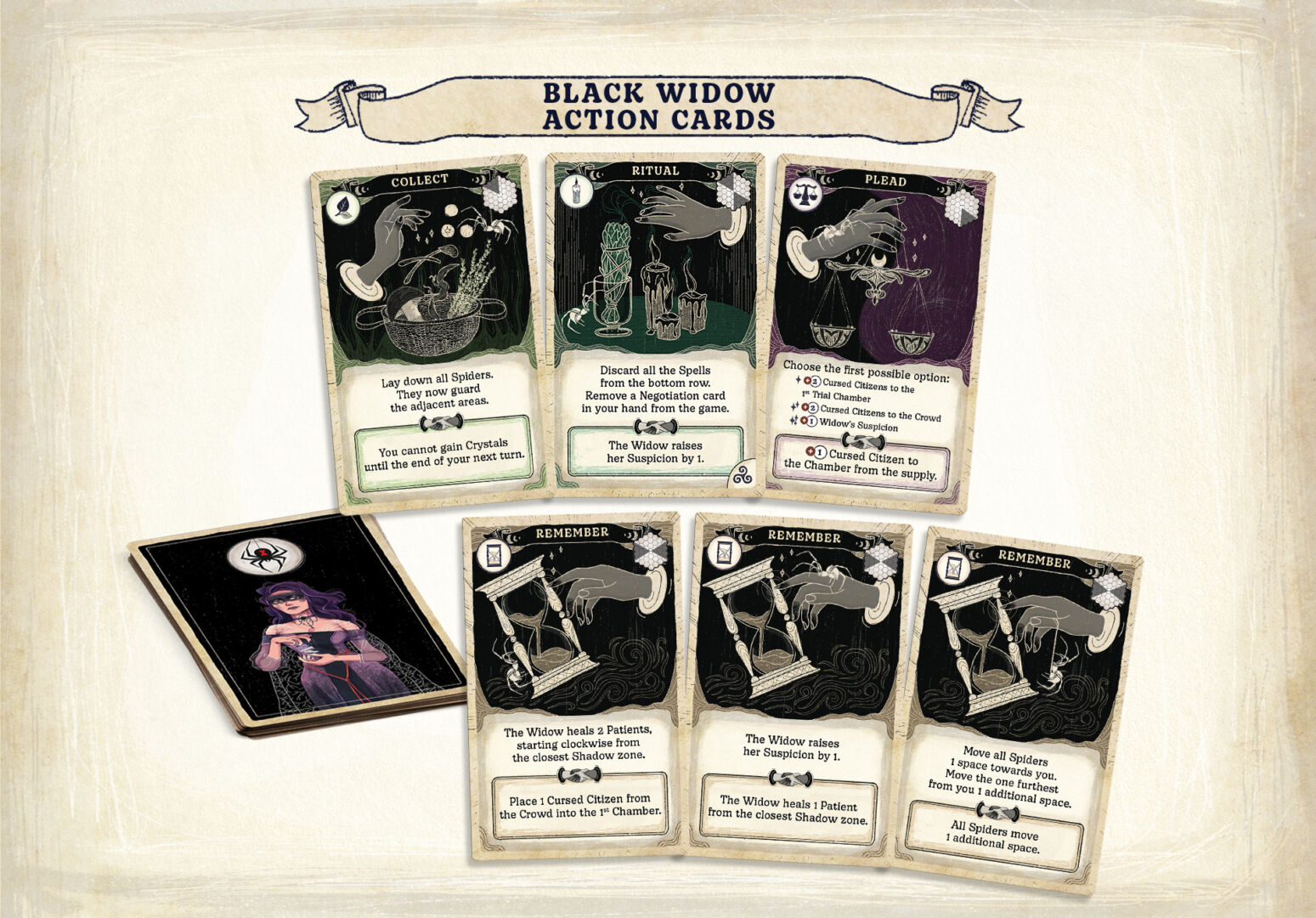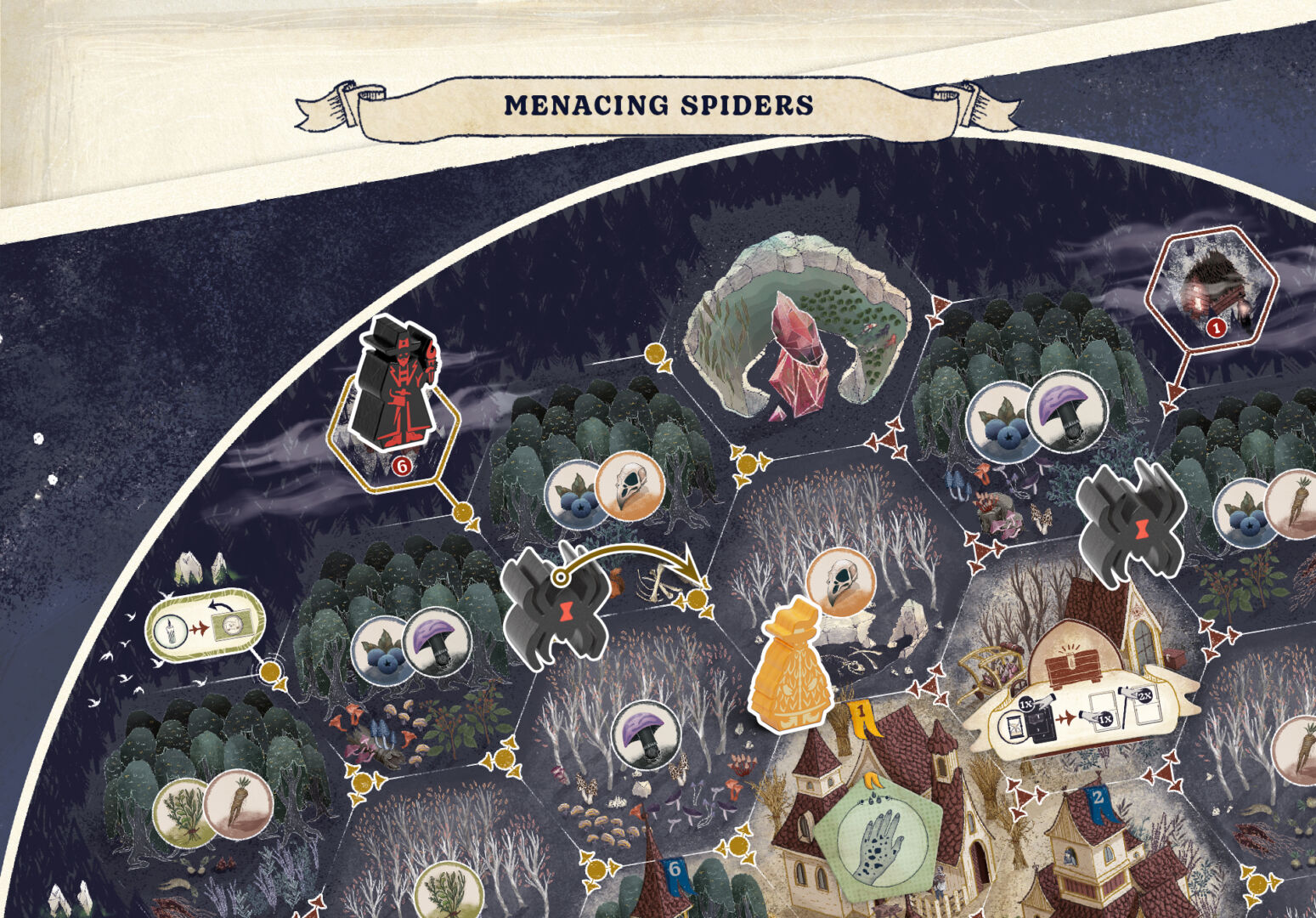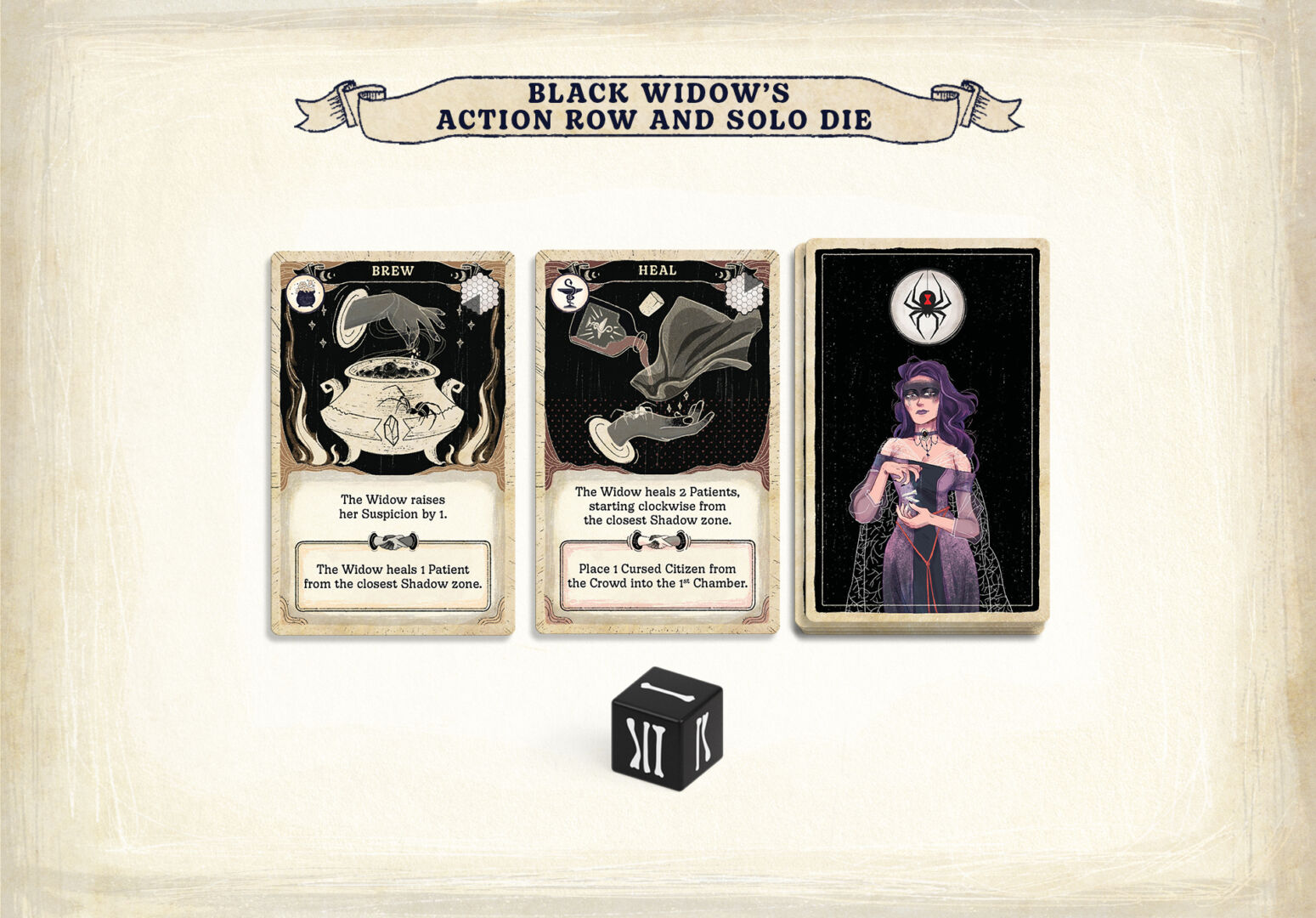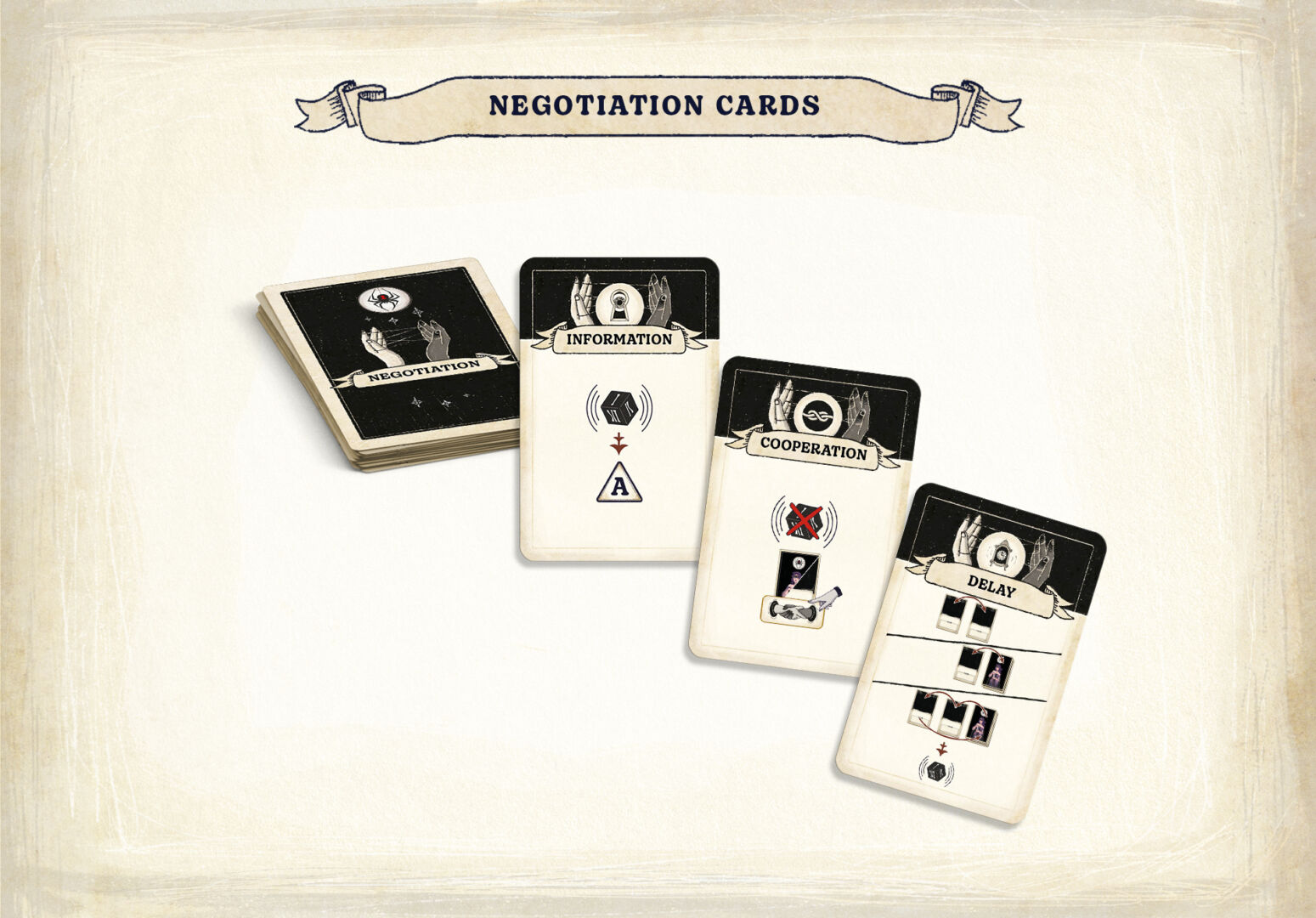A design spotlight on Septima’s solo mode
2023. February 28.
Hi everyone, David Turczi here (apologies, I assume you were expecting Scarlett Johannson, based on the title).
The day I first played Septima, I was in love straight away. Card rondel, synergic actions, simple but relevant positioning… It felt very Mindclashy, yet undoubtedly lighter than the beasts I have spent the last few years working on. Still, we know our audience, and we know a solo mode is both expected and beneficial to the game. Organizing a game night is a difficult task (at least we’re past the pandemic, huh!), and many fans want to experience the awesomeness of the full game even if they’re home alone… And since the fundamental fun of the game is interacting with your “opponents'' - sometimes even purposefully cooperating with each other, I knew that this solo mode has to simulate a player, so a “crisis management” mode (like the Voidfall solo mode) was out of the question. Still, designing an automa you can cooperate with is something I’ve been avoiding in the past, since you can’t really beg to or argue with a deck of cards, right?
For me designing an automa for most eurogames comes down to two questions, one thematic and one mechanical:
🕷️What are the primary interactions of the (2 player) game? I prefer my automas to simulate as much of the core gameplay as possible, so any real interaction must be simulated with the automa.
🕷️Who is your opponent? Yet, there are usually bits of the game that are not touched by obvious interactions, and if I simply abstract them out, they feel poorer in the solo mode. So making the solo thematically make sense, giving the opponent a personality will inspire a few “solo specific” mechanisms that will recreate some of the motivations of the multiplayer game. Think of how Perseverance’s Dissenters came together because of the concept of Acceptance, or how Kanban EV’s solo mode makes sense exactly because it’s about your senior colleagues trying to steal your thunder…
The absolute primary interaction of Septima is the action selection. So we knew from the start that the automa must be selecting actions from a card rondel similar to the player’s. I prefer some predictability in my automas, so I turned to the method my developers lovingly call the “Turczi-die”: put three cards in a row, and take a die with 1-1-1-2-2-3. Each turn roll the die for the automa, resolve that card, then slide and refill… The first issue with the bot’s card rondel was the Remember action: it’s one of the formative elements of your strategy, which action is important enough to be repeated? We wanted to avoid an unwieldy flowchart the player would need to evaluate, so I came up with the idea of having a deck of Remember cards, each copying a different action, and at setup you randomly pick one of them to be added to the automa’s action deck. This solved the Remember card issue and gave the automa a slightly different focus or personality for each game.

The next challenge was figuring out what the automa should do on each action. Since other players are occasionally doing stuff that forces you to reevaluate your choices (a Spell is taken from the offer, a patient is healed before you can make it there, or simply stands on the spot you wanted to go to), I wanted the automa to simulate this too. I’ve sat down with Robin (who was luckily well-versed in my style of solo modes), and designed an effect for each of them. Heal would remove patients, Recruit and Plead would affect the number of citizens your opponent has in the Crowd and the Chambers, and Ritual would cycle the Spell offer.
The trick was to figure out what the bot should do on the remaining actions. When I collect ingredients, it doesn’t directly affect you, so the bot couldn’t have either. We tried “bot loses you some wisdom” style roadblocks, but the in-game scoring opportunities in Septima are not that many, so it felt forced and occasionally too punishing. This is where the second question - theme - came to the rescue. Since “being in the wrong place” is an interaction, but just having one other piece on the board would not make enough difference to be worth it, we decided to have three pieces roam the board. In the first thematic attempt they were swamp zombies, but still, their effect was not relevant enough. When we introduced the effect that Collect “lays them down” blocking you from collecting adjacent to them, and that you would suffer penalties for even moving next to them, the swamp zombie theme didn’t make much sense anymore - so they became giant spiders, and the automa - the one controlling them - is Black Widow, the troublemaking, somewhat antisocial witch… Of course witch hunters cannot arrest spiders, and frankly the Widow doesn’t care how suspicious she is - so raising the automa’s suspicion became an interesting pressure point: it increases the number of Angry Citizens, but it doesn’t worry her much. This gave us the effects for the last missing actions (Chant, Brew), and we had a full deck for her.

My trusted solo playtesting team, led by the legendary John Albertson (“the man who played the Chronossus a 100 times”, also the co-creator of many of my solo modes, such as the Dissenters of Perseverance, dived into the game. They identified three issues, each more “demoralizing” at the time than the previous one.
🕷️Issue 1: The automa action row didn’t matter enough. With three cards face up, and at most 50% of guessing what the automa would pick, the players started not caring much about it. If one of their intended actions happened to coincide with the most likely action, they prioritized it higher, but nobody changed their plans just because there was a 1/6th chance of any one action coming up… I interrogated the multiplayer development team on how they plan their turns, how well they can guess what their opponent is doing, and realized the issue was that the action row was not predictable enough, despite being more than enough in several past solo modes for other games. Since the actions have some sequence to them in Septima, and because in multiplayer your opponent’s position on the Ritual track also speaks of their upcoming actions, players could actually be much more certain what their opponent would pick - but every now and then, an opponent would do something completely different, surprising them. So the action row of three cards became two cards, and the die changed to 1-1-1-1-2-3: giving you 66% certainty that the first card will be picked, 12% of the second, and 12% of something completely unexpected (on a roll of 3 you draw a new card from the automa deck and the Widow resolves that instead of the visible ones). This proved to be enough certainty for the testers to be willing to change their plans if they wanted to match (or avoid matching) with the Widow’s first card…

🕷️Issue 1: The automa action row didn’t matter enough. With three cards face up, and at most 50% of guessing what the automa would pick, the players started not caring much about it. If one of their intended actions happened to coincide with the most likely action, they prioritized it higher, but nobody changed their plans just because there was a 1/6th chance of any one action coming up… I interrogated the multiplayer development team on how they plan their turns, how well they can guess what their opponent is doing, and realized the issue was that the action row was not predictable enough, despite being more than enough in several past solo modes for other games. Since the actions have some sequence to them in Septima, and because in multiplayer your opponent’s position on the Ritual track also speaks of their upcoming actions, players could actually be much more certain what their opponent would pick - but every now and then, an opponent would do something completely different, surprising them. So the action row of three cards became two cards, and the die changed to 1-1-1-1-2-3: giving you 66% certainty that the first card will be picked, 12% of the second, and 12% of something completely unexpected (on a roll of 3 you draw a new card from the automa deck and the Widow resolves that instead of the visible ones). This proved to be enough certainty for the testers to be willing to change their plans if they wanted to match (or avoid matching) with the Widow’s first card…
🕷️Issue 3: Something was missing, making everything ultimately meh. This is the absolute nightmare comment a designer can get from their developers. No one big issue exists, just nothing sings. We sat down all four of us - Robin, Viktor, John, and myself - to compare the things the multiplayer team liked in the game, to see if those were still in the solo game to be liked. We even tried designing new mechanisms for the game to “enrich” ( = complicate) the system. They spent many days trying out our new ideas in multiplayer, and while it did inspire a few improvements, ultimately, they were all judged unnecessary. So I went back to the core of the game, the action selection and the matching. Obviously, it sounded more exciting with 3 players than in solo, but why did it work with 2 players and not in 1? Watching Robin and Viktor play, it dawned on me: even in 2 player mode, the game is not zero sum, thus players have a motivation to talk to each other. And no matter how predictable it is, and how well it simulates the multiplayer actions, it turned out the something missing was that you just cannot talk to an automa. Remember, I mentioned at the beginning, I was always afraid to design an automa you could cooperate with, for this very reason. So I took a deep breath and created a handful of Negotiation cards.

One to change the bot’s mind about what action to favor, one to offer up a different action to the bot to match with, and one where you actually resolve the Widow’s pick before yours, thus you can know with absolute certainty what she is doing before you decide whether you want to match with her, work around her, etc. You get a limited number of these cards at the beginning of the game, and you decide when you use them. They are all one use - simulating the fact that you won’t be able to convince your opponent or read your opponent’s intentions perfectly an unlimited number of times. Being super useful but very limited, selecting them gives you that exciting mental kick that makes up for the lack of the automa deck’s conversational skills. We sent back the game to the solo testers and suddenly everyone started having a great time and thus being in the mood to notice all the other smart gears of the game (that the multiplayer testers knew very well)...
